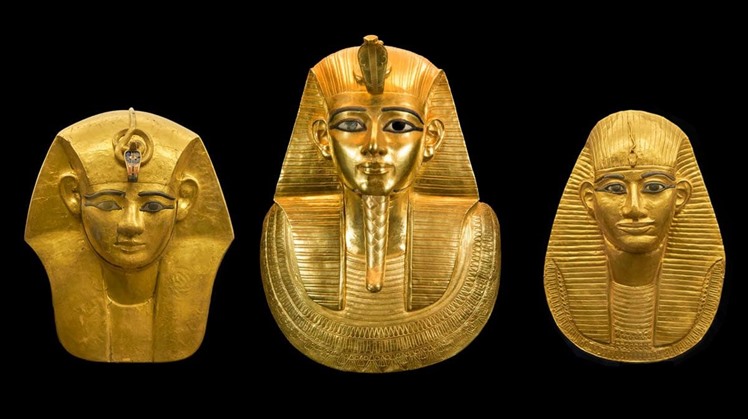The Egyptian Museum in Tahrir is currently conducting development work for room No. 2 in which was the mask of King Tutankhamun, which was transferred to the adjacent room No. 3 in preparation for its transfer to the Grand Egyptian Museum in the pyramid, and the development work in the room came as a prelude to preparing the room for Tanis’s holdings. Which will be displayed in place of the Golden King's collectibles, what are those pieces?
Tanis’ collection contains a large number of distinguished artifacts, numbering 2,000 pieces, in addition to the golden mask, and there is also the golden Sashing mask, which is from the same 22nd Dynasty, and there is another set of silver coffins, which is a very rare group.
The Tanis collection contains many rare and non-repetitive gold coins in the Egyptian civilization, including necklaces, bracelets, accessories and many ornaments, and its holdings are called Tanis gold, because of its distinct and unrepetitive values.
The Egyptian Museum in Tahrir, in the heart of Cairo, includes the largest collection of ancient Egypt's antiquities, as it contains more than 136,000 Pharaonic antiquities, in addition to hundreds of thousands of antiquities in its stores.
As for its holdings, the Egyptian Museum consists of two floors, the ground of which is devoted to heavy artifacts, “such as stone coffins, statues, paintings, and wall inscriptions.” The upper floor is devoted to light antiquities, such as “manuscripts, statues of gods, royal mummies, relics of daily life, images of mummies, incomplete sculptures, statues and utensils of the Greco-Roman era, and antiquities.” especially the beliefs of the afterlife”, as well as complete collections such as the “Tutankhamun Collection”, and the museum also includes a huge number of Egyptian antiquities from prehistoric times until the end of the Pharaonic era, in addition to some Greek and Roman antiquities, including “a group of pottery (from the ages of Prehistoric), Narmer Pillar (Monotheism era), Khasekhem statue (dynasty 2), statue of Djoser (dynasty 3), statues of Khufu, Khafre and Menkaure (dynasty 4), statue of Ka'aber and statues of servants (dynasty 5), and the statue of the dwarf Sanab (dynasty). 6), the statue of Mentuhotep Nebhepetre (dynasty 11), the statues of Amenemhat I, II and III (dynasty 12), the Ka statue of King Hor (dynasty 13), the statues of Hatshepsut and Tuthmosis III (dynasty 18), the Tutankhamun group (dynasty 18), and K . group Noz Tanis, and a large group of mummies from different eras.
 Wed, Feb. 23, 2022
Wed, Feb. 23, 2022